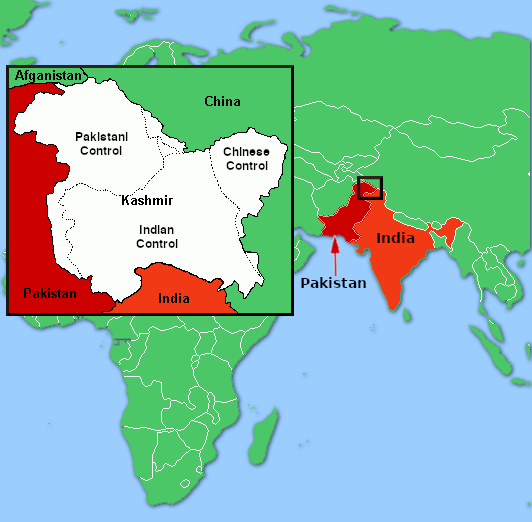
Circle the area on this map

A. The former British colony of India was partitioned into the majority-Hindu India and Pakistan, which was mostly Muslim. Bloody religious fighting killed thousands, and millions of refugees flowed across the new borders after the partition. The Hindu prince ruling majority-Muslim Kashmir wanted to remain independent but ultimately joined India.
C. The Himalayan region of Kashmir is now divided among Pakistan, India and China. Some Muslims in Indian-controlled Kashmir began an insurgency in 1989. India poured troops into the region and accused Pakistan of arming the militants. Pakistan has denied helping the Muslim separatists who claimed responsibility for bombing the Indian troops.
A. Bangladesh is bordered by the Bay of Bengal to the south; India to the west, north and east; and Myanmar to the southeast. East Pakistan was completely separated from the rest of Pakistan, and had a different language and ethnicity. India backed its separation from Pakistan. The Maldive Islands, Myanmar and Sri Lanka also were once ruled by Britain.
D. The Indus is fed by Himalayan glaciers and flows through Kashmir and Pakistan to the Arabian Sea. The Indus Civilization originated around 3300 BC, and India is a Greek and Latin term for "the country of the River Indus." The Himalayas’ glaciers are melting rapidly, which could help agriculture in the short term but imperil water supplies once the ice vanishes.